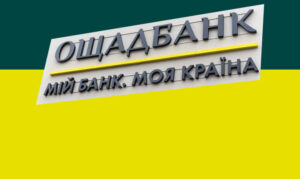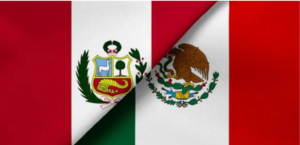
The annual Forbes-2025 billionaires list separately identifies 16 individuals whose fortunes are linked to the crypto market.
Based on the Forbes publication and industry reports, the top 10 crypto investors in 2025 include:
Changpeng Zhao (CZ, Binance);
Giancarlo Devasini (Tether/Bitfinex);
Brian Armstrong (Coinbase);
Jean-Louis van der Velde (Tether/Bitfinex);
Paolo Ardoino (Tether);
Stuart Hegnar (Tether);
Michael Saylor (MicroStrategy);
Jed McCaleb (Ripple/Stellar);
Chris Larsen (Ripple);
Justin Sun (TRON).
The list was compiled based on the crypto industry affiliation of Forbes-2025 participants; Forbes does not rank the exact positions within the top ten separately.
According to Forbes, in 2025, more than 3,000 billionaires were included in the global list, 16 of whom are from the crypto sphere; the appearance of a number of Tether executives and Justin Sun on the list is noted separately. In 2024, Forbes already noted a significant expansion of the group of “crypto billionaires,” in particular due to the top managers of Tether, Coinbase, and Ripple.
The top 10 above reflects the most prominent owners of capital directly created or accumulated in the crypto industry (exchanges, stablecoin issuers, public Bitcoin traders). Forbes’ final wealth estimates are updated throughout the year based on market prices.
Source: https://www.fixygen.ua/news/20251104/top-10-kriptomagnativ-svitu-reyting.html

International rating agency Fitch Ratings has affirmed the long-term foreign-currency issuer default rating (IDR) of Oschadbank (State Savings Bank of Ukraine) at ‘CCC’ and its local-currency IDR at ‘CCC+’, reflecting the lender’s stable performance under wartime conditions and continued sovereign support.
According to Fitch, Oschadbank’s risk profile remains closely tied to the Ukrainian sovereign, given the bank’s large holdings of government securities and placements at the National Bank of Ukraine (NBU). At end-1H25, sovereign exposure accounted for about 44% of assets in government bonds, 9% in NBU deposit certificates, and 5% in placements at the central bank. Loans to state-owned enterprises made up roughly 20% of the portfolio.
Fitch reported that Oschadbank’s impaired loans ratio fell slightly to 22.1% at end-1H25 (from 22.6% in 2024) amid loan growth, while loan-loss reserves covered 77% of impaired loans. The bank’s operating profit to risk-weighted assets improved to 11.4% in 1H25, supported by reversals of loan-loss allowances.
Customer deposits represented 97% of non-equity funding, including a strong retail base (59% of deposits). The loans-to-deposits ratio increased to 38.6% but remains modest.
Following the repayment of a eurobond in March 2025, Oschadbank’s remaining foreign-currency debt consists mainly of a bilateral loan from an international financial institution. Fitch expects the bank to continue servicing all external obligations.
“Operating conditions for Ukrainian banks remain challenging due to the war, but Oschadbank’s performance is supported by NBU policy measures and continued international assistance,” the agency said.
Oschadbank, founded in 1991, is one of Ukraine’s two state-owned systemic banks. With total assets of UAH 479.1 billion (12.3% of sector assets) as of September 2025, it ranks second among 60 Ukrainian banks by total assets. The state owns 100% of the bank through the Ministry of Finance.

On Monday, November 3, ANO party leader and likely future Czech Prime Minister Andrej Babiš signed a coalition agreement with the far-right Freedom and Direct Democracy (SPD) party and the Motorists for Themselves political force, Radio Prague International reports, citing European Truth.
After four weeks of negotiations, the parties agreed on the main program goals of the future government, as well as the distribution of ministerial portfolios among the parties.
“The agreement defines political priorities, the number of ministers, and the principles of government personnel formation,” ANO representatives said.
The next step will be to submit proposals for the composition of the government, followed by a vote in parliament.
Tomio Okamura, leader of the SPD, who was nominated jointly by the SPD, ANO, and Motorists, is expected to become speaker of the Chamber of Deputies.
During the election campaign, Okamura repeatedly made anti-Ukrainian statements, in particular regarding the restriction of the rights of Ukrainian refugees in the Czech Republic.
After the election of the speaker of parliament, the current government must resign, which will pave the way for the formation of a new cabinet headed by Babiš.
On October 27, Czech President Petr Pavel officially tasked Andrej Babiš with forming a government after the ANO party won the parliamentary elections on October 3–4, 2025.
ANO received the most votes among all political forces, ahead of the Together coalition and the Social Democrats.
According to preliminary data, Babiš’s cabinet will consist of 15 ministers, half of whom will be appointed by ANO, five by the SPD, and two by the Motorists party.
Andrej Babiš already headed the Czech government in 2017–2021. His ANO party positions itself as “centrist” and advocates strong state support for business. The SPD is known for its Eurosceptic and anti-immigration positions, while the Motorists for Themselves party advocates for the liberalization of traffic rules and lower taxes for the transport sector.
ANO, Babiš, CZECH REPUBLIC, ELECTIONS, GOVERNMENT, PARLIAMENT, SPD, Томіо Окамура

Insurance company ARX (Kyiv) made payments totaling UAH 50.831 million in January-September 2025 under military risk insurance, according to information from the insurer.
Payments were made for 104 insured events. Of these, 97 related to motor vehicles insured against damage or destruction as a result of damage or total loss of the vehicle from missiles and drones, including damage from their debris, or debris from structures and trees caused by the fall of such debris.
In addition, seven cases involved payments under insurance contracts for buildings and structures with finishes and communications, integral property complexes, as well as equipment, office equipment, and inventory damaged as a result of rocket and/or drone attacks, for a total amount of over UAH 40 million.
ARX is part of the international insurance holding company Fairfax Financial Holdings Ltd.

Peru has decided to break diplomatic relations with Mexico after former Prime Minister Betsy Chavez sought refuge in the Mexican embassy to request political asylum, Reuters reports, citing Peruvian Foreign Minister Hugo de Cella.
“In response to this unfriendly act and considering the repeated instances of interference in Peru’s internal affairs by current and former presidents of that country, the Peruvian government has decided today to sever diplomatic relations with Mexico,” de Cella said.
Chávez, who served under President Pedro Castillo, faced criminal charges in connection with her alleged involvement in Castillo’s attempt to dissolve Congress in late 2022. The former prime minister had been in prison since June 2023 but was released by a judge in September while her trial was ongoing.